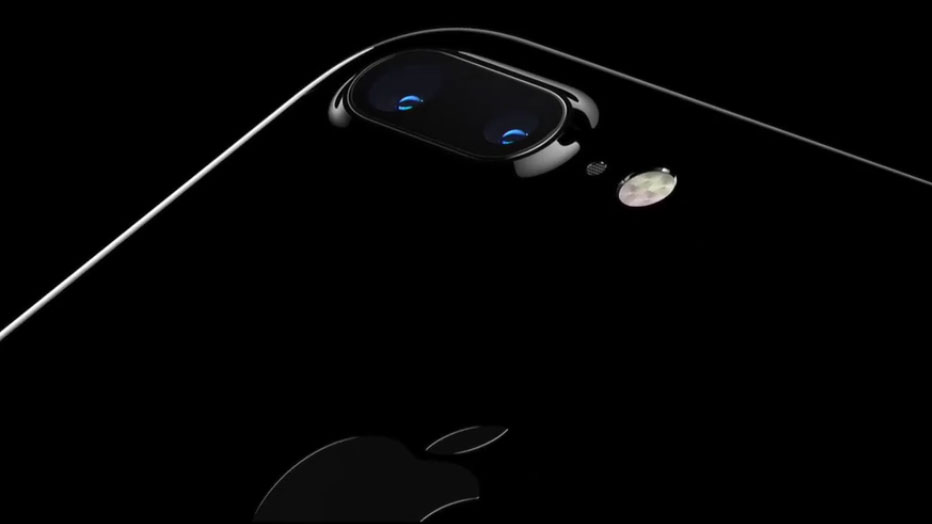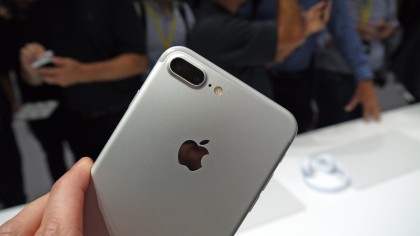
For a long time, Apple's 8MP camera was the pick of the bunch for those looking for the best image quality in a smartphone. Heck, Apple even rammed it down our throats with smug billboard posters preaching the line 'shot on iPhone'.
Thing is, the competition caught up, and for the last couple of years Apple has seen the crown of best camera in a smartphone slip from its grasp.
Apple determinedly stuck with the 8MP camera all the way up to the iPhone 6 and 6 Plus after we first saw it in the iPhone 4, but Samsung fought back with the likes of the Galaxy S6 and Galaxy Edge S7 Edge, jumping ahead of the mighty iPhone (when it comes to image quality at least).
Even the bump to 12MP on the iPhone 6S and 6S Plus failed to see the Cupertino firm fully close the gap with its South Korean rival.
Plenty of other manufacturers have tried dual-lens technology on their phones already with the HTC One M8, LG G5 and Honor 6 Plus all feature double snaps, while Huawei took a more extreme, imaginative route with their dual lens P9 Plus.
- Read our hands on: iPhone 7 Plus review
The clever bit though is what's happening inside, with the P9 sporting two sensors - one capturing color information and the other black and white data. This information is cleverly combined to produce an image that has better low light performance (reducing the fuzzy grain-like effect that can plague smartphones when light levels drop), as well as improving overall image quality.
This approach neatly sidesteps the fact that the sensors in smartphones are tiny...even a run of the mill compact camera sports a larger sensor, with larger photosites (pixels to you and me) that have better light gathering capabilities, resulting in better noise control and sharper image.
Get daily insight, inspiration and deals in your inbox
Sign up for breaking news, reviews, opinion, top tech deals, and more.
With the quest for ever more slim and compact devices, squeezing in a larger sensor into a smartphone isn't a realist proposition, so this approach by Huawei is a clever one.
The fightback
But Apple is fighting back with the iPhone 7 Plus, with a duo of all-new backside illuminated 12MP cameras. However, rather than opting for Huawei's approach to the problem, Apple has taken a different route.

Realising that the fixed wide-angle lens is not suited to all types of photography (and despite past marketing propaganda, a digital zoom is a rubbish compromise), Apple has opted to simply stick a secondary telephoto lens (with an aperture of f/2.8) on the back with another 12MP sensor alongside the wide-angle lens (this time with an aperture of f/1.8).
Apple aren't giving much away with specific focal lengths at the moment, but the lens on the iPhone 6S was about the equivalent of 28mm.
What promises to be interesting to see in use is the way that these two lenses work in tandem, combining to deliver a 2x optical zoom.
Not only that that, but both cameras can be used together to achieve shallow depth-of-field style images (according to Apple at least) that are easily achieved with a DSLR, but almost impossible to do with a smartphone. We'll be looking forward to trying this out ourselves.
It's nice to see image stabilisation, though the specs are a little vague on how effective this is, while it's also fantastic to see raw file support finally make it to the iPhone, too.
The iPhone 7 Plus camera certainly looks like it'll shake things up, but this dual lens approach is nothing new in the world of photography - Kodak even dabbled with it back in 2006 with the horrible EasyShare V705 digital camera, while the zoom technology has also been seen before with Nokia's PureView technology.
So it may be nothing new, but if Apple has got the technology right, it could see the iPhone 7 Plus rise to the top of the smartphone camera table.
Phil Hall is an experienced writer and editor having worked on some of the largest photography magazines in the UK, and now edit the photography channel of TechRadar, the UK's biggest tech website and one of the largest in the world. He has also worked on numerous commercial projects, including working with manufacturers like Nikon and Fujifilm on bespoke printed and online camera guides, as well as writing technique blogs and copy for the John Lewis Technology guide.
